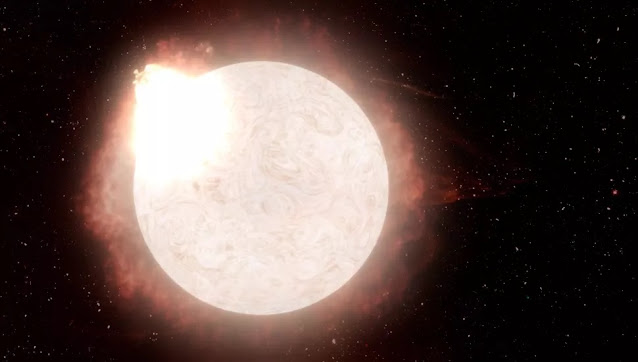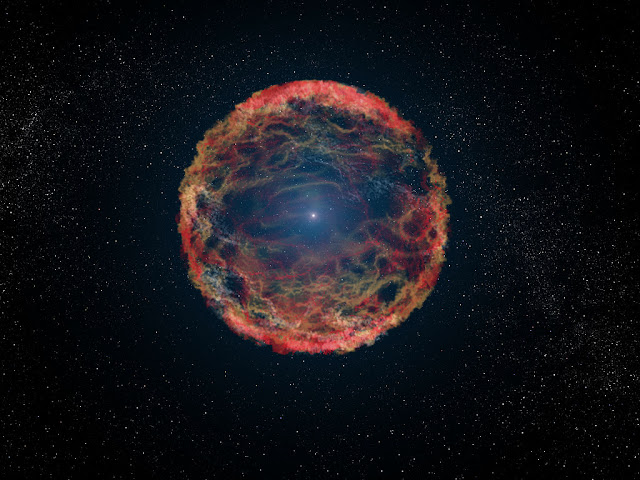For the first time ever, scientists witnessed a star explode in real time.
For the first time, astronomers witnessed a massive star explode in a flaming supernova, and the experience was far more intense than they had imagined.
According to a recent study that was released on Jan. 6 in the Astrophysical Journal, observers started watching the dying star, a red supergiant known as SN 2020tlf that is about 120 million light-years away from Earth, more than 100 days before its final, catastrophic collapse.
The star erupted with brilliant flashes of light during that time when enormous globs of gas blasted from its surface, as seen by the researchers.

The researchers were taken aback by these pre-supernova pyrotechnics because previous studies of red supergiants on the edge of bursting gave no indication of violent emissions, they said.
Wynn Jacobson-Galán, the study’s principal author and a research fellow at the University of California, Berkeley, stated in a statement, “This is a breakthrough in our knowledge of what huge stars do moments before they die.” “We witnessed the first explosion of a red supergiant star!”
When big stars explode in popularity
Red supergiants are the largest stars in the universe by volume, with radii that are hundreds or even thousands of times larger than the sun’s. (Red supergiants are neither the brightest or most massive stars in the cosmos, despite their size.)
Similar to our sun, these enormous stars produce energy by the nuclear fusion of atoms within their cores. While our sun only burns hydrogen and helium, red supergiants have the ability to produce far heavier components. Supergiants’ cores heat up and becoming denser as they burn more and heavier ingredients. By the time they start fusing iron and nickel, these stars finally run out of energy, their cores collapse, and they explode catastrophically as type II supernovae, ejecting their gaseous outer atmospheres into space.
Red supergiants are known to go supernova, and scientists have studied their aftereffects, but until today they have never seen the complete process in action.
The authors of the new study started looking at SN 2020tlf in the summer of 2020, when the star flashed with brilliant radiation bursts that they subsequently understood to be gas exploding from the star’s surface. The University of Hawaii Institute for Astronomy Pan-STARRS1 telescope and the W. M. Keck Observatory on Mauna Kea were used by the astronomers to observe the irritating star for 130 days. The star finally erupted at the end of that period.
The star had a thick cloud of gas around it at the time of its explosion, which was probably the same gas the star had been emitting in the months before. This demonstrates that large-scale explosions started far before the star’s core collapsed in the fall of 2020.
“We’ve never confirmed such violent activity in a dying red supergiant star where we see it produce such a luminous emission, then collapse and combust, until now,” study co-author Raffaella Margutti, an astrophysicist at UC Berkeley, said in the statement.
The team’s results show that red supergiants experience significant alterations in their internal architecture, which culminate in erratic gas outbursts in the last months before collapsing.
Reference(s): IOP
Do not forget to share your opinion with us to provide you with the best posts !




0 Comments